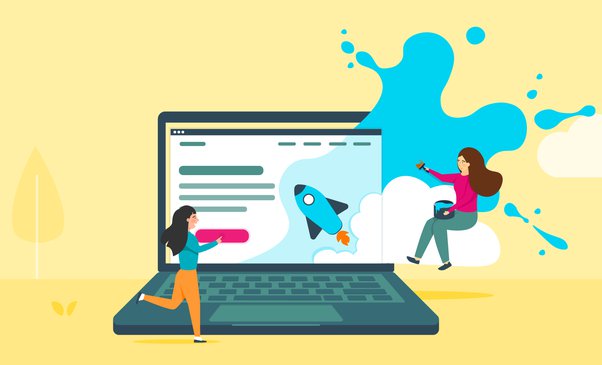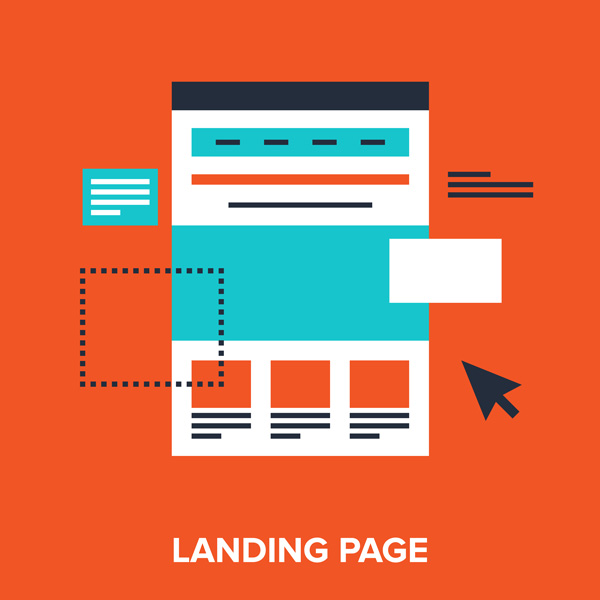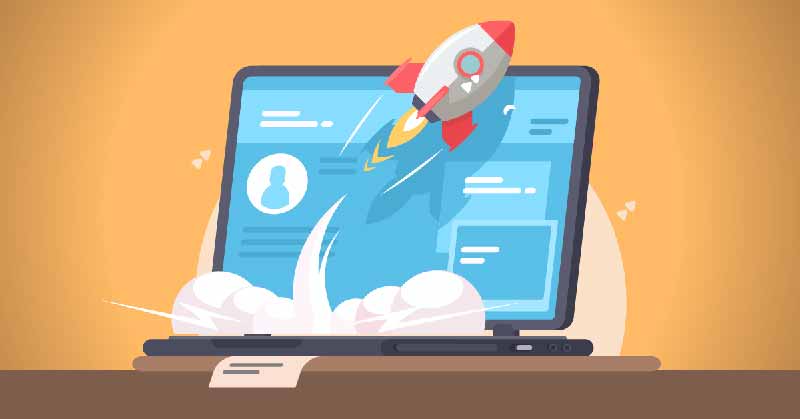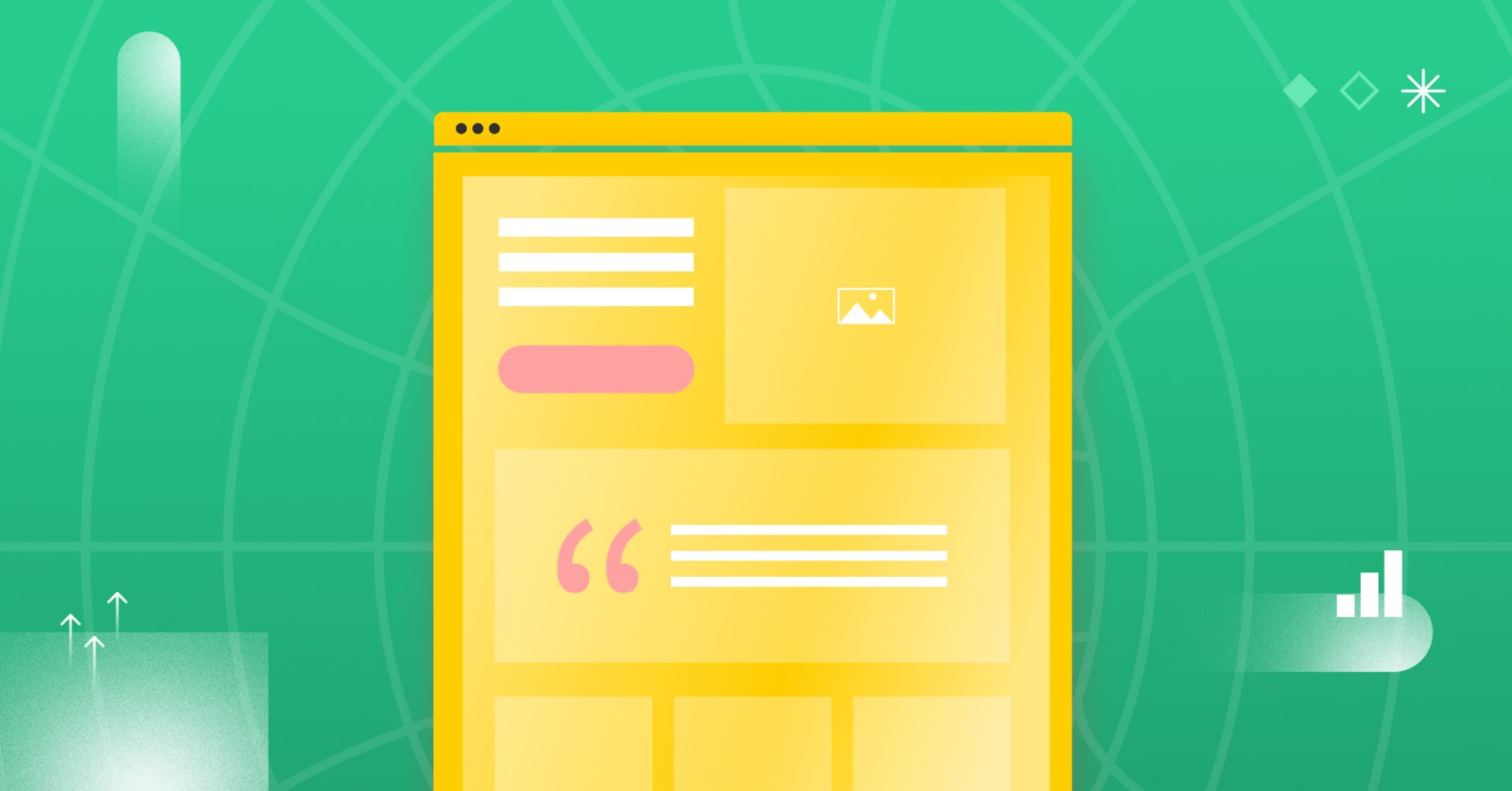
What is the content of the landing page?
The landing page’s content is extremely simple and smooth; it is prepared and uploaded on a separate page of the website. The landing page is designed with the aim of attracting the audience so that the audience does not face extensive and scattered information at the beginning. In digital marketing, there are differences between the landing page and the first page of the website. When it comes to digital marketing and online advertising, the audience connects to the website’s landing page. Audiences have access to summary content on the landing page of the website and can read the content of the landing page. Through the links on the landing page, the audience can access other parts of the website. Mainly among the content of the landing page of any website, there are forms designed to collect audience information.
It was discussed earlier about the forms available on the landing page. The forms are intelligently designed and receive information such as email, phone number, and name of the contact. All landing pages are a kind of website page, but not every website page is a landing page! The landing page’s content is better to be simple, complete, and comprehensive and describes the company’s products and services. A landing page is also discussed in SEO and website optimization. In website design, the landing page is very important because the landing page complements the website’s main page.

What is a landing page?
In digital marketing, a landing page is a standalone web page created specifically for a marketing or advertising campaign. It’s where a visitor “lands” after they click on a link in an email or ads from Google, Bing, YouTube, Facebook, Instagram, X, or similar places on the web.
Unlike web pages, which typically have many goals and encourage exploration, landing pages are designed with a single focus or goal, known as a call to action (or CTA, for short).
It’s this focus that makes landing pages the best option for increasing the conversion rates of your marketing campaigns and lowering your cost of acquiring a lead or sale.
What is the purpose of launching a landing page?
Every business that operates in the online space and engages in websites pursues three general goals. The purpose of landing page design includes direct sales, audience creation, and communication. The goals included in the design of the landing page content are all cleverly used to impact the audience. In website design (all website pages), you must be up-to-date, creative, and intelligent. To learn more about these goals, follow the rest of the article.
The first goal of landing page design: Direct sales
The first goal of setting up and designing the website’s landing page is the direct sale of the website’s products and services. In e-commerce, a landing page is about direct sales of a specific product. Some websites prepare their landing page content with the goal of direct sales. Online advertising and digital marketing are all connected to the landing page to directly sell various services and products. The landing page can be linked to all virtual networks and social media. It goes without saying that the higher the landing page traffic, the better it is for the website.
The second goal of landing page design: Create an audience
It was mentioned earlier that the landing page’s content was launched to attract and create customers. On the landing page, forms are designed that receive information such as email, contact number, name, and surname from the audience. This information is used to communicate with the audience. Sometimes, the designer uses longer forms to access the audience’s tastes and characteristics in addition to personal information. The more valuable and professional the content of the landing page, the higher the website’s conversion rate. In the design of the landing page, which is done with the aim of creating an audience, free e-books, online seminar registration, guides, and newsletter registration are used in the content of the landing page.
The third goal of landing page design: Communication
The third goal of landing page design is to communicate with the audience at different stages of the work. The purpose of communicating with the audience is to guide and encourage them to buy and sell website products and services. According to the complete landing page guide, the audience should stay on the website. For this reason, various links are placed in front of the audience and encourage the audience to click. In other words, the visitor enters the website’s landing page and goes to the next pages from the landing page. The transfer of pages is automatic and purposeful so that the audience is smartly placed on the sales path.

What is the use of the landing page? The use of the landing page is to convert the audience into a customer. The content of the landing page is able to change the idea and opinion of the audience and can turn the audience who does not intend to buy into a customer. The landing page’s content introduces the audience to the products and services and leads the audience into the path of buying and selling. The process of communicating with the audience goes slowly until the sale of the product or service is finalized. This process increases the conversion rate of the site.
Checking the features of the landing page
1- Stunning title
One of the most prominent features of the landing page is its main title. The title should be surprising enough to attract the attention of the audience at first glance. Note that the title should not be more than 20 words and less than 10 words.
2- Persuasive subtitles
The main title has the task of attracting the audience’s attention, and the subheadings keep the audience on the landing page. Subheadings should encourage the audience to read the content eagerly.
3- Use of images
One of the features of the landing page is the use of large images related to your business. It is better to use unique photos to introduce your products and services. It is recommended to learn photography techniques for more success.
4- Provide additional explanation
Different products and services are introduced in various types of landing pages, and for each product and service, a few additional lines of explanation should be provided. Additional explanations should be simple, fluent, direct, and understandable.
5- Logical flow
The logical flow is as important as the content of the landing page. The logical flow of the landing page is that after writing the valuable content, the call to action button is designed.
6- Bringing up an issue for consensus
One of the landing page optimization techniques is to make the audience think and sympathize.
7- Bringing up the achievements of the purchase
Another landing page optimization technique is to highlight the audience’s achievement. It is tempting to know what benefit the audience will receive by purchasing any products and services. One of the landing page optimization techniques is to make the audience think and sympathize.

Other landing page features
8- Providing customer satisfaction
One way to attract the audience’s attention is to provide quotes from the audience in the content production of the landing page. Audiences who just landed on your landing page will trust your business by reading these quotes.
9- Communication methods
At the end of the landing page’s content, contact methods are mentioned, including several contact numbers, email addresses, contact forms, and locations.
10- Warranty
Store websites must be equipped with the logo of the electronic trust symbol or a conversion symbol to guarantee the services of the website.
11- Using call to action
When ordering content, a call to action button should be designed at the end of the landing page’s content.










